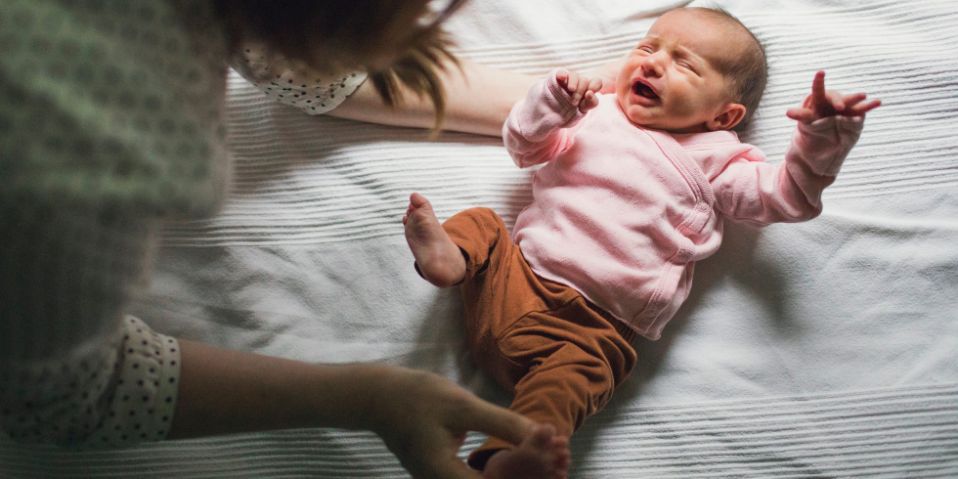Do You Know That Yeast Infections Are Common In Babies? Here’s How To Recognize The Symptoms And Effectively Treat /Prevent Them

Yeast infections are common in babies, especially during their first six months. In adults, yeast infections primarily affect people with vaginas, but in babies, they can occur no matter the sex.
Below is what you need to know about what causes yeast infections in babies and how to treat them.
What is a yeast infection?
A yeast infection is caused by an overgrowth of fungus, most commonly a type known as Candida albicans, which is naturally present in the skin, mouth, gastrointestinal tract, and vagina.
Fungus candida is normally in everyone’s bodies and is kept in check with healthy bacteria, but if that bacteria gets disrupted, Candida can grow. This causes redness and irritation, says Brandi Kenner-Bell, MD, an assistant professor of dermatology and pediatrics at Northwestern University Feinberg School of Medicine.
Symptoms of yeast infection in babies
A yeast infection can occur in any warm and moist area on the body, like folds of skin, or in the diaper area. In babies, the most common presentations of yeast infections include:
- Oral thrush, which is the most common type of yeast infection in babies. Symptoms of oral thrush include a thick white coating on the tongue, inside the cheeks, or on the gums and lips. It can be uncomfortable or painful for your baby, but not always.
- Fungal diaper rash, which looks like a bright red rash often with dots and pimple-like lesions at the edges of the rash.
- A bright red rash in the folds of the neck and underarms.
A fungal diaper rash may seem like a regular diaper rash at first, Kenner-Bell says, but if it doesn’t clear up in three days with a standard diaper rash cream, it is likely a yeast infection.
What causes yeast infections in babies
Because infants have a developing and immature immune system, they are more prone to yeast infections than adults.
Yeast also thrives in warm, moist environments, so the skin in a closed diaper is an ideal location for an overgrowth of yeast, Kenner-Bell says. According to Kenner-Bell, yeast infections in babies are therefore more common during the warmer, more humid months, because of increased sweat in the diaper area.
Antibiotics are another common cause of yeast infections in babies, as they can disrupt the balance of good and bad bacteria.
Though uncommon, recurring yeast infections that do not respond to standard treatments could be a sign of underlying immune dysfunction, Kenner-Bell says. For the most part, yeast infections in babies do not indicate any underlying health conditions, but if they are recurring and not clearing up even with treatment, you should talk with your doctor.
Baby yeast infection treatment
A yeast infection in a baby will not easily resolve on its own and needs to be treated with an anti-fungal cream applied two to four times a day, says Leah Alexander, MD, a pediatrician with Pediatric Care Associates in New Jersey.
Anti-fungal creams that contain miconazole and zinc oxide are effective and safe for treating baby yeast infections. They can be purchased over-the-counter, but talk to your doctor before using them. They should not be used on a baby younger than four weeks old.
Oral thrush is most commonly treated with a prescription oral antifungal drop that is applied to the sides of the infant’s mouth.
You may notice an improvement within 24 hours of beginning to treat the infection, but it likely won’t completely clear for about seven to 10 days, Alexander says.
You can also try some of these at-home remedies to help relieve symptoms and keep the infection from getting worse:
- Keep the infected area clean and try to frequently wipe moisture from it.
- If the infection is in the diaper-area, have some diaper-free time to let the area air out.
- Once you know it is a yeast infection, avoid using regular diaper rash cream and any other irritants.
When to see a doctor
Proper treatment of a yeast infection requires a proper diagnosis, so if you suspect your baby or toddler has a yeast infection, take them to the doctor, Alexander says. If you have tried to wipe white residue from your infant’s mouth and it is persisting, or if a diaper rash is not clearing up with standard diaper rash creams, you should seek medical care.
A yeast infection that persists beyond 10 days or recurring infections should be evaluated by a doctor, Alexander says You may need stronger antifungal medication to clear it up, or your baby may need to be evaluated for an underlying condition, like an immunodeficiency or immune dysfunction.
How to prevent a baby yeast infection
Yeast infections are not contagious and can not spread from one baby to another. Although yeast infections in babies are common and typically easy to treat, they can cause discomfort.
Here are some ways to decrease your baby’s risk of developing one:
- Regularly change your baby’s diaper and give the area time to completely dry before putting on a new one.
- Wipe moisture from folds in the skin; Although this can be challenging when babies are at the age where they naturally have fat folds.
- Clean pacifiers and nipples to decrease the risk of oral thrush.
- Avoid overdressing your baby, especially during warmer months, to decrease the accumulation of moisture from sweat.
Having said all of this, despite your best efforts, yeast infections do happen in young infants and don’t necessarily reflect a lack of effort or neglect on your part. It’s a common aspect of the parenting experience.


